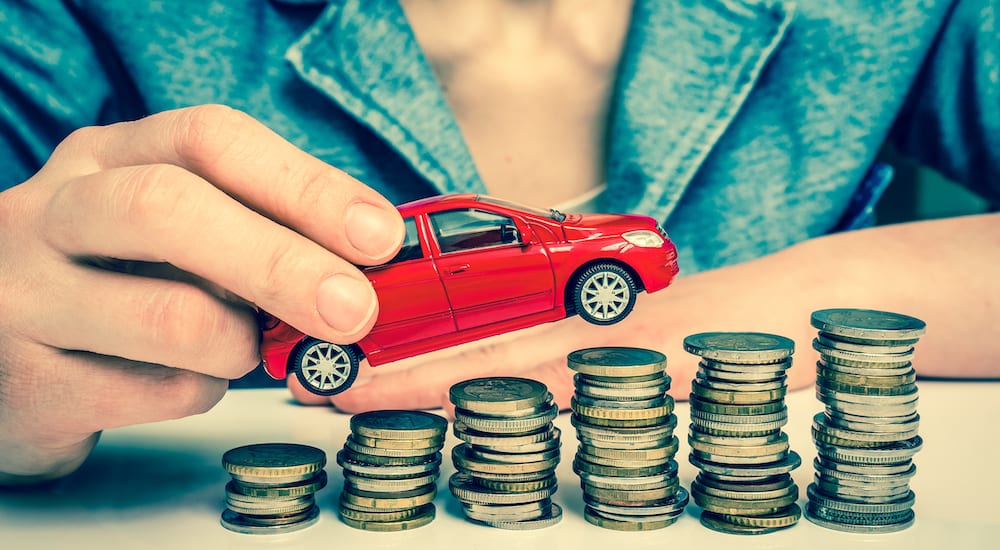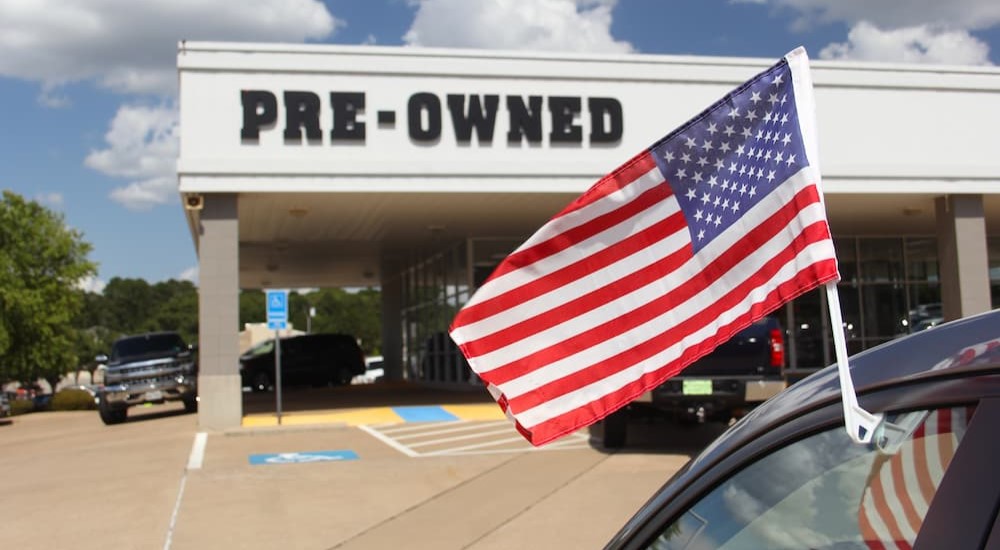You don’t have to follow the car industry closely to know that car prices, particularly used car prices, reached all time highs in recent years as manufacturers grappled with supply chain disruptions caused by the pandemic, global conflicts, union strikes, and rising inflation. This phenomenon peaked in 2022, when many used cars were selling for as much as or even more than brand-new models. But while prices have receded from that high-tide mark, they haven’t collapsed like many expected. While new car production is getting back on track, used car prices are still nearly 30% higher than they were in 2020 and they probably aren’t going to return to what they once were ever again.
These persistently high prices have already begun reshaping the automotive industry and are something every driver should be aware of. If you were wondering, “What is my car worth?” you might be surprised both by its value and how much it would cost to replace it. This has encouraged some drivers to trade in their cars for new models sooner but has pushed many others to hold on to cars longer than they normally would. It has also encouraged manufacturers and dealers to push deeper into the used car market, further inflating prices in a new normal where used cars are increasingly becoming a premium product.
High Inflation Means High Prices
Before diving deeper into the long term trends of car prices, it is important to address the elephant in the room––the massive inflation we have experienced over the last few years. According to the official Consumer Price Index (CPI), we have seen 21% inflation between March of 2020 and March of 2022 (the official numbers for April and May have not yet been released). This accounts for a substantial portion of the persistently high car prices, but not all of it. In fact, the effect of inflation on the car market has been remarkably uneven, with new car prices matching inflation while used car prices massively exceeded it.
In the four-year span from 2020 to 2024, the Bureau of Labor Statistics (BLS) estimates that new car prices have increased by the same 21% as the overall CPI. Meanwhile, used car prices have gone up by 28.5%. Further, while new car prices have increased substantially, there has been a steady increase from 2020 to today that did not see the extreme peak in pricing that used cars experienced in 2022, when prices briefly exceeded 50% of pre-pandemic values. High inflation means that used car prices will never return to their former levels. However, this divergence between used car prices and overall inflation means that there is still plenty of room for prices to drop before they no longer exceed overall inflation. So why are they still so high?

10 Million Missing Cars
The largest issue keeping used car prices high is supply and demand. While you might expect this to affect new and used car prices equally, new car sales are more insulated from market forces. While many less scrupulous dealerships have no problem charging excessive “market adjustments” when new vehicles are hard to find, recommended pricing set by manufacturers does not generally see massive fluctuations and the number of good dealerships who stick to recommended prices helps keep new car prices down. But once a car hits the used market, all bets are off.
To give an idea of how much supply has trailed demand over the last four years, the current car market is missing approximately 10 million vehicles that were simply not built because of the disruptions of the past few years. Between 2015 and 2019, there were roughly 17 million new vehicles sold in the United States every year. However, the last four years saw an average of fewer than 15 million cars sold a year, with new car sales hitting a low of just 13.8 million in 2022. Without those 10 million new cars, more buyers are competing for a relatively finite supply of used cars, sending prices skyrocketing.
When Will Prices Return to Normal?
The largest question most people have is when will used car prices drop––if not to pre-pandemic levels, then at least to the level of inflation? Whether the answer is good news or bad news will depend on whether you are trying to sell a car or buy one. In short, we can expect used car prices to slowly go down as new car production returns to normal, but we are likely looking at many years before we see used cars no longer commanding their current premium compared to new cars. It will take a long time for new car production to fill that 10 million vehicle shortfall, especially since production is still far below what it was five years ago.
There is also a secondary issue that has largely been masked by the massive market disruptions we have experienced. Even without those 10 million missing cars, the used car market would have more demand than ever because many manufacturers are no longer producing affordable cars. Currently, almost every brand is in a race to move upmarket, introducing new, more expensive models while cutting their entry-level options.
In the late 2010s, Ford and Chevy began eliminating their entire sedan lineups in favor of higher-margin truck and SUV models. The import brands haven’t been as aggressive but have also been shedding affordable models, with options like the Toyota Yaris, Honda Fit, and VW Golf being discontinued. The effect of this move is only just beginning to be felt as the drivers who bought those affordable cars are reaching the point where they want to buy something new. When they do, they are now faced with the choice of either upgrading to a more expensive type of vehicle or shopping used and introducing more demand for a limited supply.
High Car Prices Are Here to Stay
While we may see used car prices reach something approximating “normal” by the end of the decade, the car market as a whole is shifting to adjust to accommodate the persistently high prices of used cars. One of the largest moves we have seen in recent years is massive expansions of manufacturer Certified Pre-Owned (CPO) programs. New initiatives like GM’s CarBravo, which was announced in 2022 during the peak of used car prices, are an attempt to squeeze even more money out of the used car market. In fact, it appears that many manufacturers are seeing their CPO programs as the replacement for the affordable models they cut from their lineup, allowing them to offer options for shoppers on a budget and rake in money with service and financing without having to produce affordable low-margin vehicles.
Dealerships have also pushed deeper into the used car market, with many of them now keeping and selling older high-mileage vehicles that would previously have been sent to auction in order to have cars on their lot that appeal to budget shoppers. An analysis by iSeeCars.com reports that the average used car sold in 2023 was 6.1 years old compared to just 4.8 years old in 2019. However, while modern cars do last longer than cars in the past, they have not seen a drastic jump in longevity in the past few years, and dealers selling older cars have not increased the total supply but simply raised prices on older models. The end result of all of these factors is a used car market that remains at historic highs and shows no signs of slowing down anytime soon.





